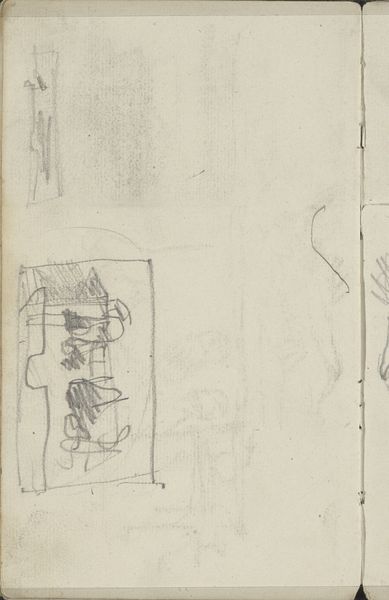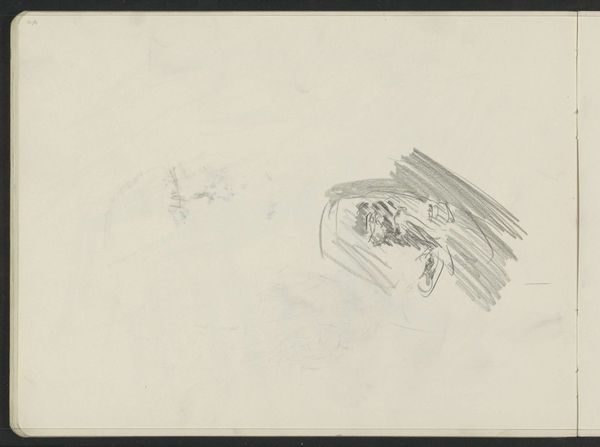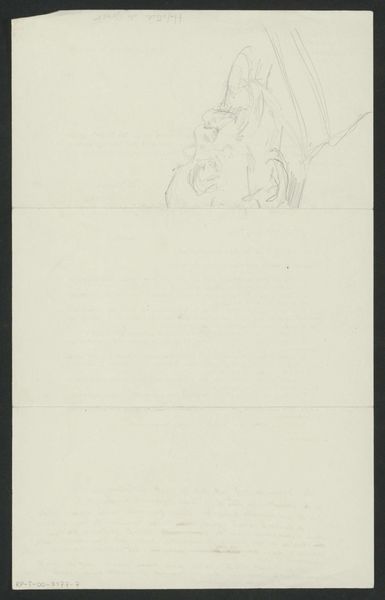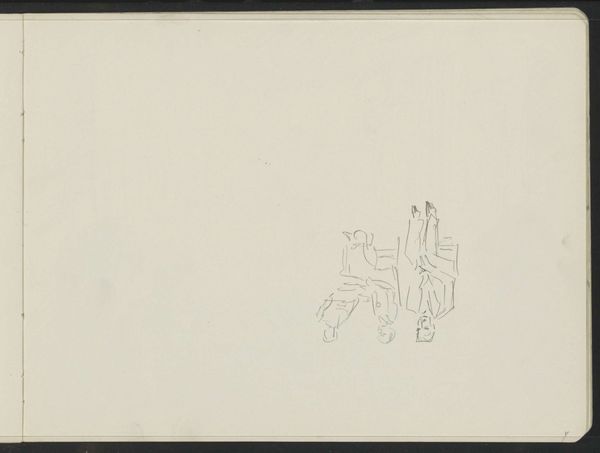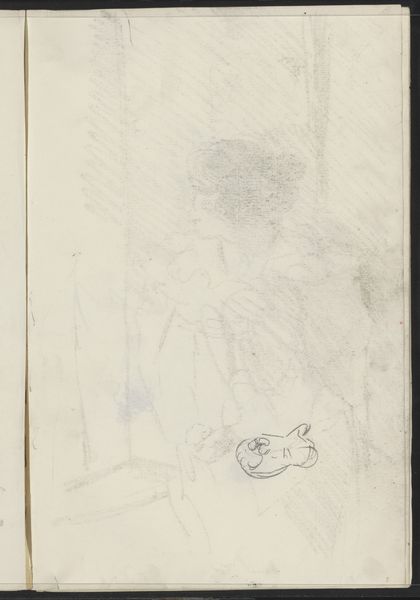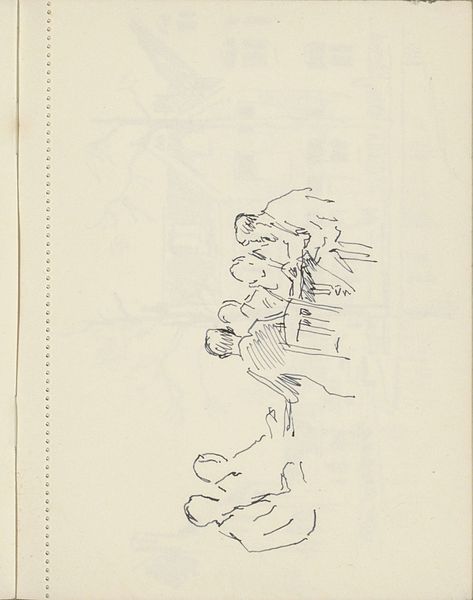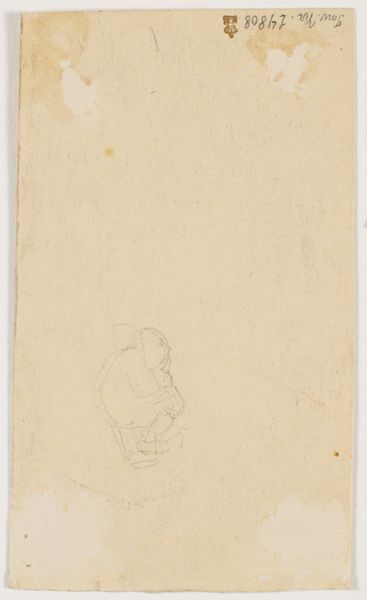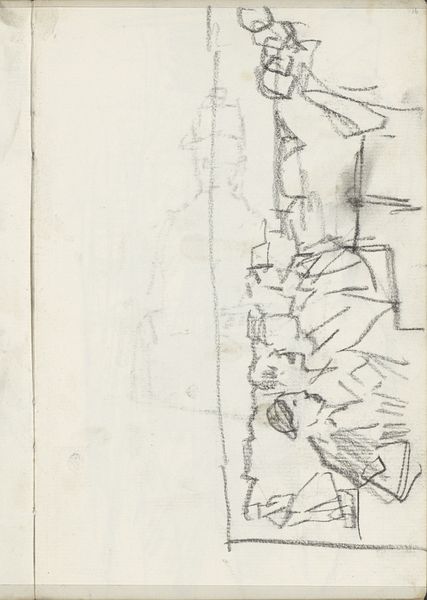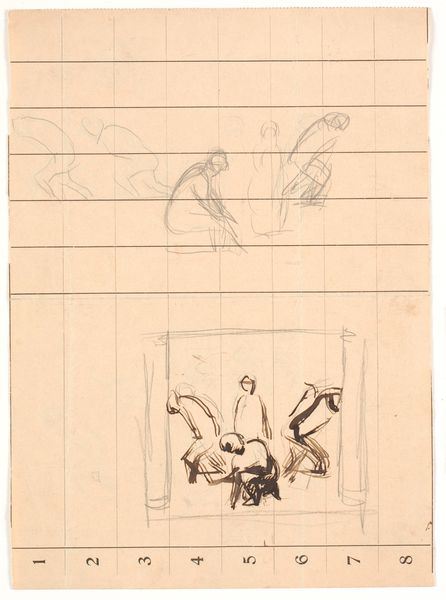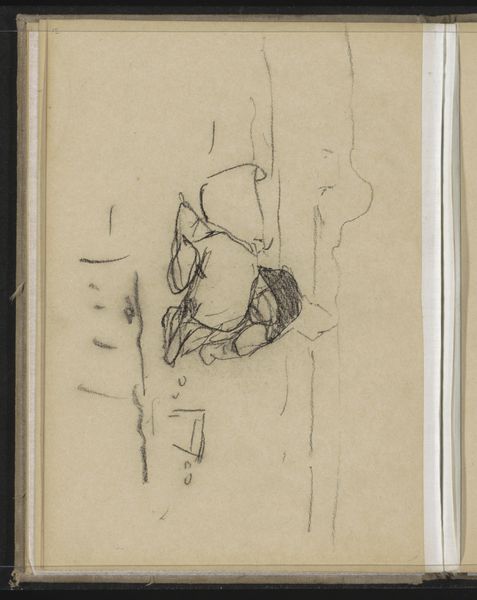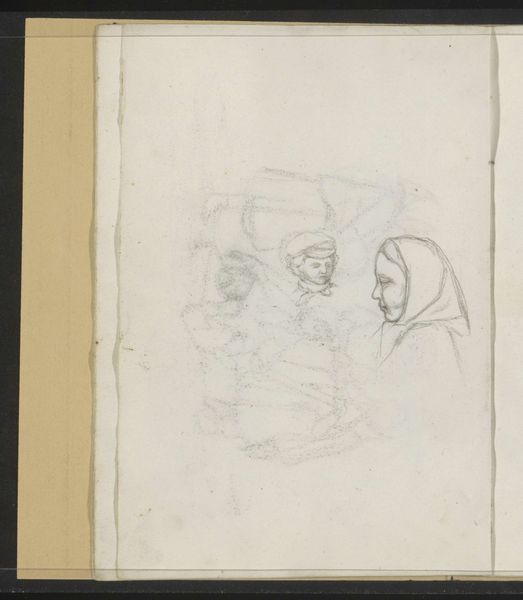
drawing, pencil
#
portrait
#
drawing
#
amateur sketch
#
aged paper
#
toned paper
#
light pencil work
#
pencil sketch
#
figuration
#
personal sketchbook
#
idea generation sketch
#
geometric
#
pencil
#
sketchbook drawing
#
shading experimentation
#
sketchbook art
Dimensions: height 88 mm, width 113 mm
Copyright: Rijks Museum: Open Domain
Curator: This is a fascinating drawing from the Rijksmuseum collection. It's titled "Twee figuren die elkaar omarmen"—"Two Figures Embracing"—and it's dated somewhere between 1906 and 1945. Editor: It’s tender, though undeniably spare. I am drawn to the visible evidence of the artistic process here; it reads almost as a note jotted in a personal sketchbook, with such a focus on capturing the basic figures in the simplest lines, what material did the artist use to draw it? Curator: The artist worked in pencil on what appears to be toned paper, or perhaps paper that has naturally aged. It feels very much like an intimate sketch, perhaps preparatory work for a larger composition. Think of it as a record of the artist's thought process as they worked toward a finished piece. Editor: Exactly, the materials reflect that perfectly. This toned or aged paper speaks volumes about material availability and potentially a conscious aesthetic choice reflecting economic constraints or perhaps the artist wanting to give off an antique aesthetic from the start. But that being said, do we know about its reception? How did its context shape its value and appreciation? Curator: That is a wonderful question! This work might have circulated primarily within a close artistic circle. Its value is not in public display but its place in artistic evolution and dialog within smaller, closely knit groups. How was this particular piece preserved? Was it deliberately stored in this way or simply left alone until rediscovered later? The art world has evolved dramatically throughout time periods. The institutional approach to the status of "aged paper" would have been completely different depending on what social contexts existed during its reception. Editor: Very insightful; thinking about labor and conservation, who was involved in preserving and storing works such as these sketches? And under what conditions? This could speak volumes about institutional prioritization within that artistic movement or institution. Curator: Absolutely. Thinking about sketches specifically highlights art institutions' complex power structures: How do these smaller more raw artistic material get presented and displayed in larger well-known musuems, versus how "official artwork" might be highlighted or displayed on opening day? This kind of display says quite a bit about art values during its opening dates, and how the cultural politics are displayed outwardly. Editor: Food for thought indeed, and quite valuable insights as to how these more “hidden” works evolve throughout history. It has been a great exploration.
Comments
No comments
Be the first to comment and join the conversation on the ultimate creative platform.

